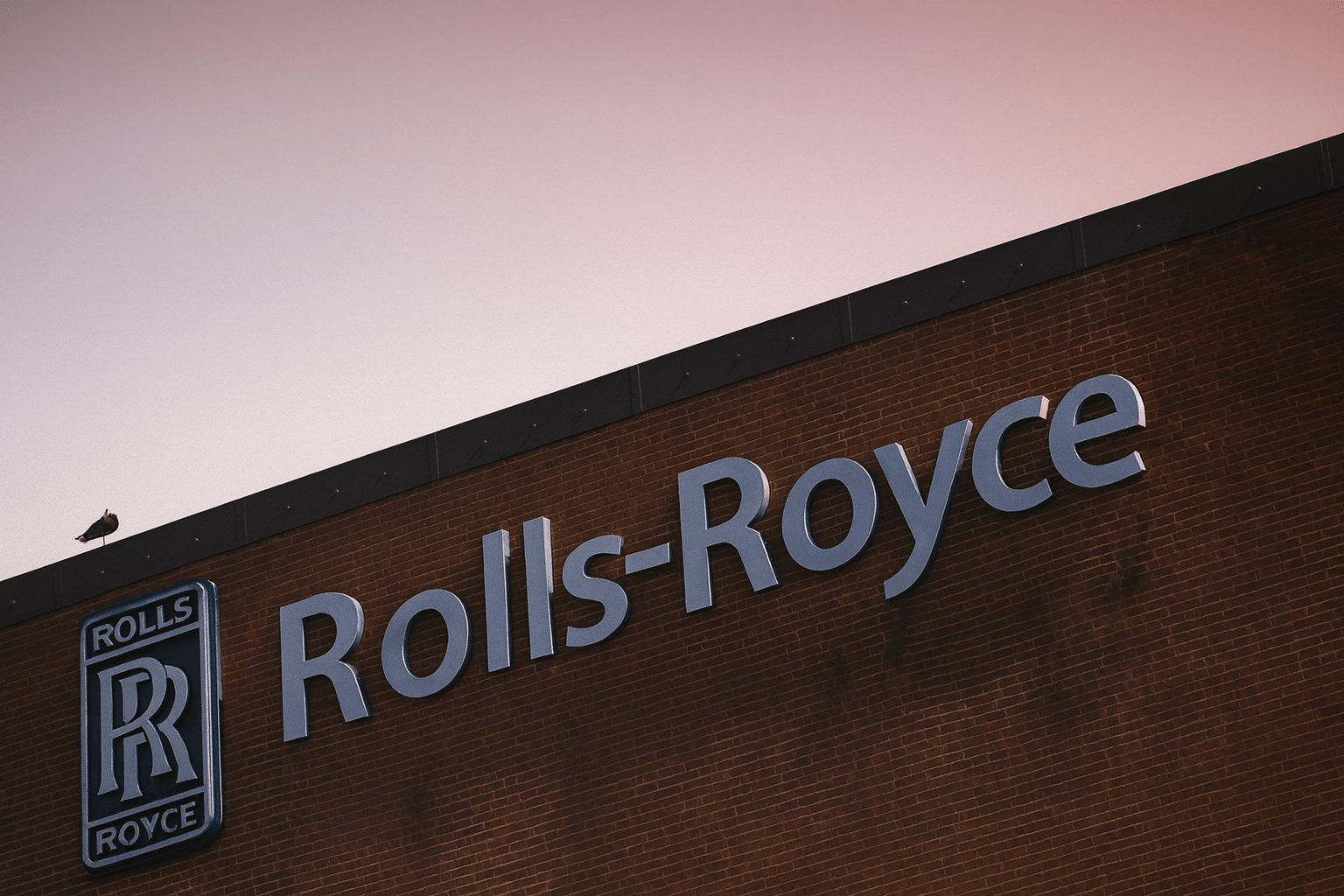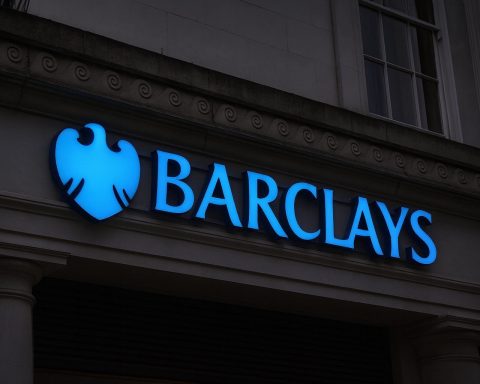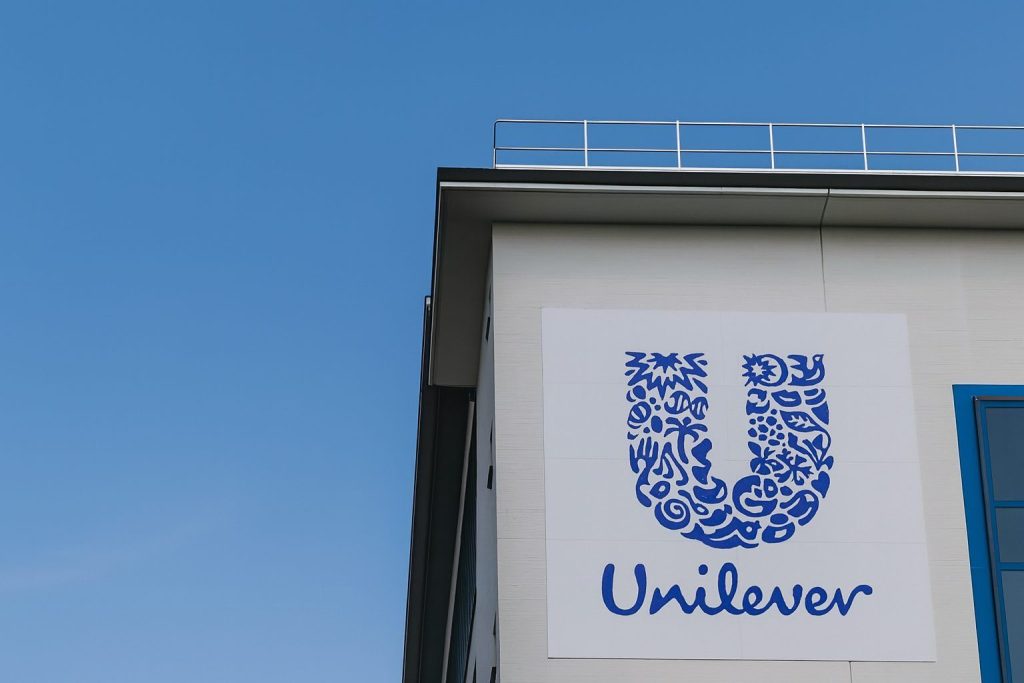Rolls-Royce Holdings plc (LON: RR.) shares are trading in the mid‑1,060p range on Friday, 28 November 2025, leaving the stock close to the top of its 12‑month range after an extraordinary multi‑year rally. The market is still digesting a flurry of November news: a reassuring trading update, major engine and maintenance wins at the Dubai Airshow, a quantum‑computing breakthrough and fresh upgrades from both credit agencies and equity analysts. [1]
Below is a breakdown of where the Rolls‑Royce share price stands today and what is driving sentiment around the FTSE 100 aerospace and defence giant.
Rolls-Royce share price today: key numbers
As of Friday’s session in London:
- Latest trading range: Around 1,060p–1,066p intraday, versus Thursday’s close of 1,058.5p, leaving the stock modestly higher on the day. [2]
- 52‑week range: Roughly 540p to just under 1,200p, keeping today’s price in the upper end of its 12‑month band. [3]
- Market capitalisation: About £89–90bn, making Rolls‑Royce one of the largest industrial names on the London Stock Exchange. [4]
- Average daily volume: Around 34m shares over the past month, underscoring intense investor interest. [5]
On a year‑to‑date basis, the stock is up roughly 85–90% in 2025, on top of a dramatic recovery from its late‑2022 lows. MarketScreener and other data providers put the year’s gain in the mid‑80s percentage range, far ahead of the broader FTSE 100’s performance. [6]
Several recent articles have highlighted just how extreme that recovery has been: from a trough near 67p in late 2022 to above 1,100p this year, a move of more than 1,500% according to long‑term analyses referenced by TechStock² and other outlets. TechStock²+1
November recap: why RR.L is still in the spotlight
There is no fresh company RNS from Rolls‑Royce on 28 November itself, but the share price is being shaped by a dense cluster of developments over the past few weeks:
- A bullish trading update (13 November)
- Civil aerospace wins around the Dubai Airshow (mid‑November)
- A strategic A380 engine maintenance deal with Emirates (20 November)
- A quantum‑computing breakthrough for jet‑engine simulations (25 November)
- RBC’s ‘Outperform’ initiation and higher analyst targets (18 November)
- Moody’s upgrade back into solid investment‑grade territory (20–21 November)
Taken together, these have reinforced the narrative of Rolls‑Royce as a transformed, cash‑generative franchise rather than a turnaround story on life support.
Trading update: guidance intact and flying hours above 2019
On 13 November 2025, Rolls‑Royce issued a trading update covering performance to 31 October. Management described “strong performance across the Group” and reaffirmed full‑year 2025 guidance for underlying operating profit of £3.1bn–£3.2bn and free cash flow of £3.0bn–£3.1bn, despite ongoing supply‑chain pressures. [7]
Key operational points from the update and accompanying Reuters coverage: [8]
- Large engine flying hours in civil aerospace were up about 8% in the first ten months of the year versus 2024 and stood around 109% of 2019 levels, reflecting a full recovery in long‑haul travel.
- Management said it was making progress on improving the durability and economics of existing Trent engines, an important lever for long‑term service profitability.
- Demand remained robust across all three major divisions: Civil Aerospace, Defence and Power Systems, with data‑centre backup power and military programmes both called out as bright spots.
Reuters noted that the company’s guidance implies at least a 24% year‑on‑year rise in operating profit compared with 2024, reinforcing the view that the transformation under CEO Tufan Erginbilgiç is still on track. [9]
Dubai Airshow and Emirates deals: deepening civil aerospace moat
Etihad wide‑body order intentions
At the Dubai Airshow 2025, Rolls‑Royce announced that Etihad Airways intends to expand its wide‑body fleet with aircraft powered exclusively by its engines. According to a company press release on 18 November, Etihad signalled plans to select: [10]
- 15 Airbus A330neo aircraft powered by Trent 7000 engines
- Seven Airbus A350‑1000 and 10 A350F freighters powered by the Trent XWB‑97
These commitments deepen Rolls‑Royce’s position on high‑value, long‑haul platforms and add to an already strong Trent XWB orderbook.
Emirates A380 maintenance partnership
Two days later, Rolls‑Royce and Emirates signed a memorandum of understanding giving the airline the right to carry out maintenance, repair and overhaul (MRO) on its own Trent 900 engines from 2027 at a new, purpose‑built facility in Dubai. [11]
Key features of the deal:
- Emirates will perform much of the A380 Trent 900 MRO work in‑house, while Rolls‑Royce retains a central role in module repairs and engineering support. [12]
- The agreement extends Rolls‑Royce’s TotalCare service coverage into the 2040s, effectively locking in decades of after‑market revenue on the world’s largest A380 fleet. [13]
For investors, this reinforces a core part of the equity story: Rolls‑Royce’s earnings are heavily driven by long‑term service contracts rather than just selling engines upfront.
Quantum-computing breakthrough: long-term edge, not short-term profit
On 25 November, Rolls‑Royce and its partners Xanadu and Riverlane announced they had completed a collaborative project applying quantum computing to jet‑engine airflow simulations. [14]
According to Xanadu’s press material and related coverage:
- By combining Xanadu’s PennyLane software with Riverlane’s quantum algorithms, the project cut certain simulation runtimes from weeks to under an hour, a reduction described as “by orders of magnitude.” [15]
- The work targets some of the most computationally demanding linear‑algebra problems in modelling airflow through large engines.
- The result is a proof‑of‑concept hybrid quantum‑classical workflow that could, in time, accelerate the design of more efficient and durable engines.
Financially, this is not an immediate revenue driver. But strategically it underlines Rolls‑Royce’s efforts to build an edge in next‑generation engineering tools, at a time when regulators and airlines are intensely focused on fuel efficiency and lifecycle emissions.
Analyst upgrades: RBC turns bullish, consensus targets creep higher
RBC’s ‘Outperform’ and 1,275p target
On 18 November, RBC Capital Markets initiated coverage of Rolls‑Royce with an “Outperform” rating and a price target of 1,275p, implying roughly mid‑teens upside from levels around 1,090p at the time of the note. [16]
RBC’s thesis, summarised across Investing.com and Proactive Investors, rests on several points: [17]
- The wide‑body civil engine business, though only about a third of group sales, accounts for roughly 70% of estimated equity value in its sum‑of‑the‑parts model.
- Rolls‑Royce is in a “cash harvest” phase on its Trent wide‑body programmes, facing limited near‑term need for heavy development spending until the 2040s.
- Free cash flow yields are projected at around 4–5% across 2026–2029, above many peers in aerospace and capital goods.
- The model deliberately assigns no value to potential future upside from Ultrafan or small modular reactors (SMRs), which RBC estimates could add up to 400p per share in optionality.
RBC does flag an important risk: consensus expectations for the next few years already sit 9–20% above its own mid‑term estimates, leaving less room for disappointment.
Consensus and AI-based sentiment
Across the wider analyst community:
- MarketScreener lists 18 analysts with a consensus “Buy” rating and an average 12‑month price target of about 1,198p, roughly 13% above Thursday’s close. [18]
- Investing.com shows a very similar average target near £12 and an all‑“Buy” analyst stance, implying low‑double‑digit upside from current levels. [19]
- AI‑driven platform Danelfin assigns Rolls‑Royce an AI Score of 9/10, classing it as a short‑term “Buy” with one of the top momentum‑plus‑fundamentals profiles in the European capital goods sector. [20]
However, not all commentary is unreservedly bullish. A widely read Motley Fool UK piece on 12 November argued that the share price rally shows signs of fatigue, noting that the stock has posted negative months recently even as expectations for 2025 earnings leave little margin for error. [21]
Credit rating upgrades: back into comfortable investment grade
The equity story is increasingly supported by the balance sheet.
- In March 2025, Fitch upgraded Rolls‑Royce to ‘BBB+’ with a positive outlook, marking a significant step up from near‑junk status during the pandemic years. [22]
- On 20–21 November 2025, Moody’s followed by upgrading Rolls‑Royce’s long‑term rating to Baa1 from Baa2, also with a positive outlook, citing strong operating performance, better growth prospects and a commitment to conservative financial policy. [23]
Rolls‑Royce itself highlighted these upgrades in its November trading update, describing them as external validation of the transformation in cash generation and leverage since 2020. [24]
For shareholders, improved credit ratings can reduce financing costs, widen the pool of potential investors and increase confidence that the company can support both capital investment and shareholder returns.
Fundamentals: from crisis stock to cash machine
The backdrop to today’s price action is a remarkable financial turnaround.
- In 2024, underlying operating profit rose about 55% to £2.5bn, sales increased 15% to £17.8bn, and free cash flow nearly doubled to £2.4bn, according to coverage in The Guardian. [25]
- That performance allowed Rolls‑Royce to reinstate its dividend and launch a £1bn share buyback programme, its first dividend return since the pandemic. [26]
- By mid‑2025, Reuters reported that first‑half underlying operating profit had reached around £1.7bn with margins above 19%, prompting management to raise full‑year guidance for both operating profit and free cash flow to around £3.2bn and £3.1bn respectively. Shares were up roughly 70–75% year‑to‑date at that point. [27]
Latest Google Finance data for fiscal Q2 2025 show: [28]
- Quarterly revenue of £4.74bn, up 7% year‑on‑year
- Net income of about £2.21bn, with a net margin in the mid‑40% range (boosted by one‑off items)
- Strong growth in cash and short‑term investments, now above £6bn
Those numbers, combined with disciplined capex, underpin the rating agencies’ confidence that Rolls‑Royce is now firmly an investment‑grade issuer again.
Valuation: expensive, reasonable, or both?
Depending on which earnings definition and data provider you use, Rolls‑Royce’s valuation looks quite different:
- Google Finance puts the trailing P/E ratio at about 15.6x, with a dividend yield around 0.7%. [29]
- Hargreaves Lansdown’s factsheet, using a different profit basis, shows a P/E above 50x and a modest yield of about 0.6%, highlighting how sensitive the metric is to underlying vs reported earnings. [30]
- Eulerpool and other fundamental services quote a price‑to‑sales ratio near 4–4.5x and forecast 2025 revenue around £20bn, implying investors are paying a premium multiple for a business that is growing but still exposed to cyclicality and execution risk. [31]
At today’s price just above 1,060p, the stock trades only a little below the average broker target around 1,190–1,200p and more meaningfully below RBC’s 1,275p target. [32]
That mix explains why opinions diverge: Bulls see a still‑undervalued compounding machine; sceptics see a mature rally where much of the good news is already embedded.
Technical picture and market positioning
Short‑term technical models present a more cautious picture than the fundamentals might suggest:
- StockInvest and similar quantitative sites flag several negative technical signals, noting that the share price has fallen in a number of recent sessions and may “perform weakly in the next couple of days or weeks,” despite still‑bullish longer‑term trends. [33]
- Historical price data show intense volatility in November, with daily ranges frequently exceeding 30–40p and volumes often above 30m shares a day. [34]
- TechStock² and other market commentators report that Rolls‑Royce remains one of the most actively traded names on UK retail platforms, frequently appearing among the top‑10 most traded stocks, with buy orders still outnumbering sells on many recent days. TechStock²+1
From a market‑structure perspective, Rolls‑Royce is now a core index constituent and a sizeable holding in products such as the Vanguard FTSE 100 UCITS ETF, where it accounts for just over 4% of the portfolio, amplifying flows from passive investors. [35]
Structural growth drivers: beyond the next quarter
The current valuation rests on the idea that Rolls‑Royce can continue to execute on several long‑term growth pillars:
- Civil aerospace: A deep installed base of Trent engines on wide‑body aircraft, rising flying hours and durability upgrades to the Trent XWB‑97, which recent reporting suggests could significantly extend time‑on‑wing for key Gulf operators. [36]
- Defence: Long‑dated contracts such as the £9bn UK nuclear submarine reactor deal announced in January 2025, plus potential wins in fighter‑jet programmes where the UK has lobbied for Rolls‑Royce engines. [37]
- Power Systems: Growing demand for mtu‑branded engines and generators for data centres, rail and military applications, highlighted repeatedly in H1 2025 commentary. [38]
- Small modular reactors (SMRs): Progress on UK and European SMR initiatives, including being shortlisted by Sweden’s Vattenfall for future nuclear projects, offers long‑term optionality that is still only partially reflected in consensus models. [39]
- Advanced engineering tools: The quantum‑computing partnership with Xanadu and Riverlane is an example of how Rolls‑Royce is trying to position itself at the forefront of computational engineering, potentially shortening design cycles for future engines. [40]
These structural drivers are precisely what underpins the bullish stance of brokers such as RBC, but they also introduce multi‑year execution and regulatory risks.
Key risks investors are weighing
Even amid strong momentum, several risks remain prominent in market debates:
- Execution risk: Consensus earnings expectations now sit above management’s mid‑term targets in some cases. Any miss on profit, cash flow or engine durability could trigger a sharp de‑rating. [41]
- Cyclical exposure: Civil aerospace depends on global long‑haul traffic and airline capex. A downturn in travel demand or a shock to fuel prices could slow flying‑hour growth. [42]
- Geopolitics and defence budgets: Defence is a key profit driver, but it is also subject to political decisions and peace‑dividend cycles. Recent market moves have shown how talk of potential peace negotiations can send defence names, including Rolls‑Royce, sharply lower on individual days. [43]
- Technological and programme risk: Ongoing upgrades to engines like the Trent XWB‑97 must deliver the promised improvements; further durability problems would be costly. Major bets on technologies such as Ultrafan and SMRs may take many years to pay off, if at all. [44]
Bottom line: where Rolls-Royce stands on 28 November 2025
As of 28 November 2025, Rolls‑Royce shares are:
- Trading modestly higher on the day and hovering around 1,060p–1,070p, close to record territory; [45]
- Up dramatically year‑to‑date and over a multi‑year horizon, thanks to a powerful turnaround in earnings and cash flow; [46]
- Supported by recent positive catalysts — a solid trading update, Dubai Airshow wins, Emirates A380 service extension, a quantum‑computing milestone and credit‑rating upgrades; [47]
- Priced at a level where most broker targets still imply upside, but where expectations are undeniably high and short‑term technical indicators show signs of fatigue. [48]
For existing and prospective investors, the story on 28 November 2025 is less about a single day’s price move and more about whether Rolls‑Royce can keep outperforming already elevated expectations over the next few years.
References
1. www.google.com, 2. www.google.com, 3. www.google.com, 4. www.google.com, 5. www.google.com, 6. www.marketscreener.com, 7. www.rolls-royce.com, 8. www.reuters.com, 9. www.reuters.com, 10. www.rolls-royce.com, 11. www.emirates.com, 12. www.emirates.com, 13. www.rolls-royce.com, 14. www.xanadu.ai, 15. www.xanadu.ai, 16. www.investing.com, 17. www.investing.com, 18. www.marketscreener.com, 19. www.investing.com, 20. danelfin.com, 21. www.fool.co.uk, 22. www.fitchratings.com, 23. cbonds.com, 24. www.rolls-royce.com, 25. www.theguardian.com, 26. www.theguardian.com, 27. www.reuters.com, 28. www.google.com, 29. www.google.com, 30. www.hl.co.uk, 31. eulerpool.com, 32. www.marketscreener.com, 33. stockinvest.us, 34. www.sharesmagazine.co.uk, 35. www.vanguard.co.uk, 36. www.flightglobal.com, 37. www.reuters.com, 38. www.reuters.com, 39. www.marketbeat.com, 40. www.xanadu.ai, 41. www.investing.com, 42. www.reuters.com, 43. www.lse.co.uk, 44. www.flightglobal.com, 45. www.google.com, 46. www.theguardian.com, 47. www.rolls-royce.com, 48. www.marketscreener.com







